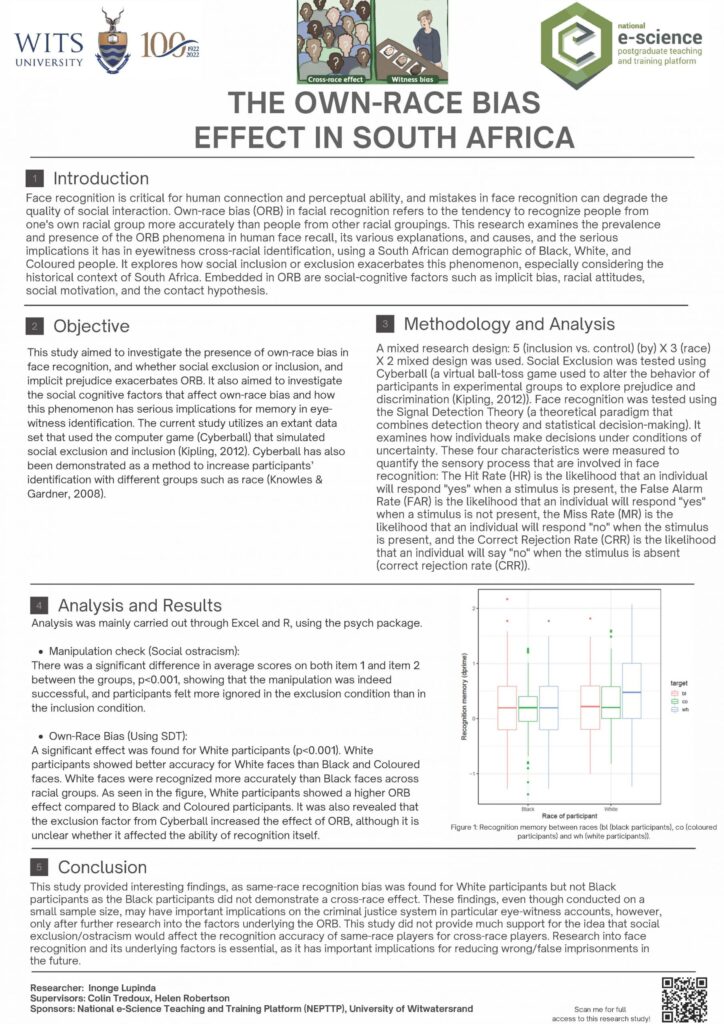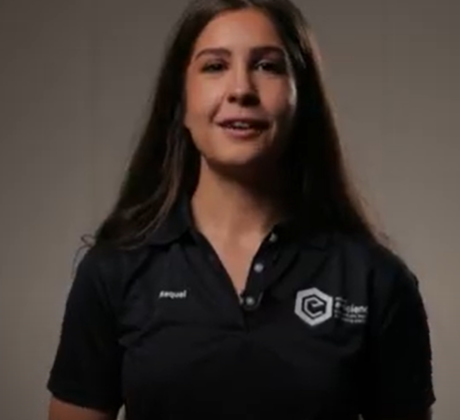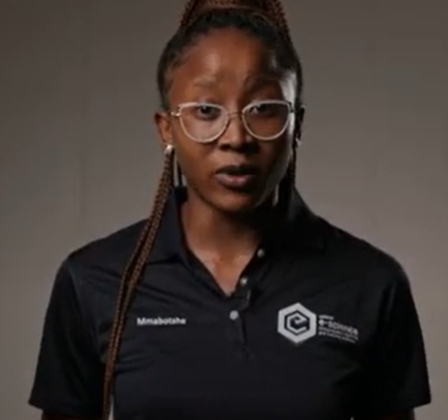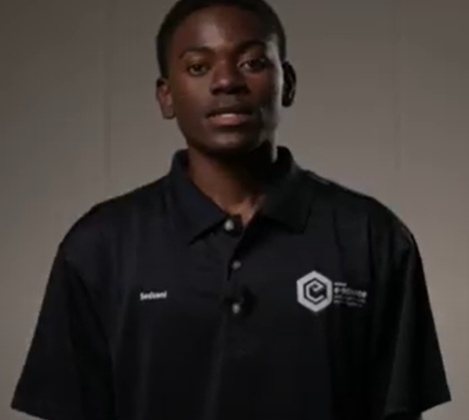Akinkaja, O. & Mosia, M., 2021. Using deep learning and sentiment analysis to identify mismatches between online courses’ reviews and ratings. In: 2021 3rd International Multidisciplinary Information Technology and Engineering Conference (IMITEC), Windhoek, Namibia, pp.1–6. doi:10.1109/IMITEC52926.2021.9714655
Antwi, A., Kammies, E.T., Chaka, L. & Arasomwan, M.A., 2025. Forecasting South African grain prices and assessing the non-linear impact of inflation and rainfall using a dynamic Bayesian generalized additive model. Frontiers in Applied Mathematics and Statistics, 11. doi:10.3389/fams.2025.1582609.doi:10.1109/IMITEC52926.2021.9714655
Baloyi, N., Mellado, B. & Ruan, X., 2021. Discrimination of signal-background events with supervised and semi-supervised learning in the search for new bosons decaying to the Z + γ final state. In: SAIP Conference. [online] Available at: https://events.saip.org.za/event/144/contributions/1492/attachments/284/388/NBaloyi_SAIP_Proceedings.pdf [Accessed 21 Sep. 2021].
Bokgoshi, L., Sixhaxa, K., Jadhav, A., Nyamane, S. & Ajoodha, R., 2023. Enhancing timely graduations: An explainable AI approach to predict academic risks in South African students. In: 2023 International Conference on Electrical, Computer and Energy Technologies (ICECET), Cape Town, South Africa, pp.1–7. doi:10.1109/ICECET58911.2023.10389444.
Bonnet, W. & Celik, T., 2021. Random sampling-based relative. IEEE Geoscience and Remote Sensing Letters, 9321136, pp.1–4.
Byamugisha, J., Saib, W., Gaelejwe, T., Jeewa, A. & Molapo, M., 2020a. Abstract PR-12: Towards verifying results from biomedical deep learning models using the UMLS: Cases of primary tumor site classification and cancer Named Entity Recognition. Association for the Advancement of Artificial Intelligence, PR-12-PR-12. Available at: https://doi.org/10.1158/1557-3265.adi21-pr-12.
Chabumba, D.R., Jadhav, A. & Ajoodha, R., 2021. Predicting telecommunication customer churn using machine learning techniques. Interdisciplinary Research in Technology and Management, 14 September, pp.625–636.
Chabumba, R., Ajoodha, R. & Jadhav, A., 2021. Predicting telecommunication customer churn using machine learning techniques. In: International Conference on Interdisciplinary Research in Technology and Management. [online] Available at: www.kaggle.com.
Daniel, L.O., Mashao, D., Olukanmi, P. & Singh, G., 2025. Network slicing for mitigating interference in dense deployments. In: 2025 IEEE 3rd Wireless Africa Conference (WAC), Pretoria, South Africa, pp.1–6. doi:10.1109/WAC63911.2025.10992603.
Daniel, L.O., Sigauke, C., Chibaya, C. & Mbuvha, R., 2020. Short-term wind speed forecasting using statistical and machine learning methods. Algorithms, 13(6).
Daniel, L.O., Singh, G., Mashao, D. & Olukanmi, P., 2024. Optimized coordinated resource allocation and power control for wireless communication networks. In: 2024 International Conference on Artificial Intelligence, Big Data, Computing and Data Communication Systems (icABCD), Port Louis, Mauritius, pp.1–10. doi:10.1109/icABCD62167.2024.10645229.
Desai, P. & Harvey, R., 2023. Is the Southern African Development Community afflicted by premature deindustrialisation? The Africa Governance Papers, 1(4). Available at: https://tagp.gga.org/index.php/system/article/view/55 [Accessed 12 Aug. 2025].
Desai, P., 2023. The link between population density, developmental outcomes and perceptions of governance in sub-Saharan Africa. The Africa Governance Papers, 1(3). Available at: http://160.119.143.6/index.php/system/article/view/42.
Essa, Y. et al., 2024. Classifying single versus multiple ground strike point lightning flashes from high-speed lightning videos using deep learning. In: 37th International Conference on Lightning Protection (ICLP), Dresden, Germany, pp.297–302.
Essa, Y., Ajoodha, R. & Hunt, H.G.P., 2020. A LSTM recurrent neural network for lightning flash prediction within Southern Africa using historical time-series data. In: 2020 IEEE Asia-Pacific Conference on Computer Science and Data Engineering (CSDE). IEEE.
Essa, Y., Hunt, H.G.P. & Ajoodha, R., 2021. Short-term prediction of lightning in Southern Africa using autoregressive machine learning techniques. In: 2021 IEEE International IOT, Electronics and Mechatronics Conference (IEMTRONICS), Toronto, ON, Canada, pp.1–5. doi:10.1109/IEMTRONICS52119.2021.9422493.
Essa, Y., Hunt, H.G.P., Gijben, M. & Ajoodha, R., 2022. Deep learning prediction of thunderstorm severity using remote sensing weather data. IEEE Journal of Selected Topics in Applied Earth Observations and Remote Sensing, 15(June), pp.4004–4013. doi:10.1109/JSTARS.2022.3172785.
Freeborough, W. & van Zyl, T., 2022. Investigating explainability methods in recurrent neural network architectures for financial time series data. Applied Sciences (Switzerland), 12(3), pp.1–15.
Freeborough, W., Gentle, N. & Rey, M.E.C., 2021. WRKY transcription factors in cassava contribute to regulation of tolerance and susceptibility to cassava mosaic disease through stress responses. Viruses, 13(9), p.1820. Available at: https://doi.org/10.3390/v13091820.
Harvey, R., Morrison, S. & Desai, P., 2025. Is South Africa afflicted by the resource curse? The Extractive Industries and Society, 23, p.101678. Available at: https://doi.org/10.1016/j.exis.2025.101678.
Hayes, B., Ashwal, L.D., Khumalo, K.B. & Iaccheri, L.M., 2024. Major, trace element and Sr-Nd isotope evidence for a sublithospheric mantle source for the Umkondo large igneous province. Geoscience Frontiers, 15(1), p.101719. doi:10.1016/j.gsf.2023.101719.
Kgoale, T., Whata, A., Nasejje, J.B., Rad, N.N. & Mulaudzi, T., 2024. Estimating average and individual treatment effects in the presence of time-dependent covariates. In: Chen, D.G. & Coelho, C.A. (eds.) Biostatistics Modeling and Public Health Applications. Emerging Topics in Statistics and Biostatistics. Springer, Cham. doi:10.1007/978-3-031-69690-9_5.
Khumalo, K.B., Ashwal, L.D., Hayes, B., Iaccheri, L.M., Meintjes, P.G. & Webb, S.J., 2024. Neoarchean lavas of the Ventersdorp Large Igneous Province, South Africa: Sr-Nd-Hf isotopic and trace element evidence for a long-lived plume beneath a stationary African continent. Earth-Science Reviews, 252, p.104752. doi:10.1016/j.earscirev.2024.104752.
Langa, K., Wang, H. & Okuboyejo, O., 2025. Parameter-efficient fine-tuning of pre-trained large language models for financial text analysis. In: Gerber, A., Maritz, J. & Pillay, A.W. (eds.) Artificial Intelligence Research. SACAIR 2024. Communications in Computer and Information Science, vol. 2326. Springer, Cham. doi:10.1007/978-3-031-78255-8_1.
Lange, R., Lange, T. & Van Zyl, T.L., 2020. Predicting particle fineness in a cement mill. In: Proceedings of 2020 23rd International Conference on Information Fusion (FUSION).
Mabunda, J.G.K., Jadhav, A. & Ajoodha, R., 2021. A review: Predicting student success at various levels of their learning journey in a science programme. In: 2021 IEEE International IOT, Electronics and Mechatronics Conference (IEMTRONICS), Toronto, ON, Canada, pp.1–5. doi:10.1109/IEMTRONICS52119.2021.9422519.
Mabunda, J.G.K., Jadhav, A. & Ajoodha, R., 2021. Sentiment analysis of student textual feedback to improve teaching. In: Interdisciplinary Research in Technology and Management. CRC Press, pp.643–651.
Magoma, P. & Chibaya, C., 2021. Towards a CIA compliant RSA hybrid built on an artificial neural network. In: 2021 3rd International Multidisciplinary Information Technology and Engineering Conference (IMITEC), Windhoek, Namibia, pp.1–9. doi:10.1109/IMITEC52926.2021.9714634.
Magoma, P. & Chibaya, C., 2021. Towards a CIA compliant RSA hybrid built on an artificial neural network. In: 2021 3rd International Multidisciplinary Information Technology and Engineering Conference (IMITEC). IEEE.
Makubyane, K. & Maposa, D., 2024. Forecasting short- and long-term wind speed in Limpopo Province using machine learning and extreme value theory. Forecasting, 6(4), pp.885–907. doi:10.3390/forecast6040044.
Malatsi, T.D. & Kara, A.H., 2022. Invariance, conservation laws and reductions of some classes of “high” order partial differential equations. Transactions of the Royal Society of South Africa, 77(3), pp.255–270. doi:10.1080/0035919X.2022.2164629.
Masangu, L., Jadhav, A. & Ajoodha, R., 2021. Predicting student academic performance using data mining techniques. Advances in Science, Technology and Engineering Systems, 6(1), pp.153–163.
Matsane, L., Jadhav, A. & Ajoodha, R., 2020. The use of automatic speech recognition in education for identifying attitudes of the speakers. In: 2020 IEEE Asia-Pacific Conference on Computer Science and Data Engineering (CSDE).
Mawela, V. & Chibaya, C., 2020. Generation of virtual reality environments in which to evaluate swarm adherence to prescribed control rules. In: 2020 2nd International Multidisciplinary Information Technology and Engineering Conference (IMITEC), pp.9–12.
Michael, T.N., Obagbuwa, I.C., Whata, A. & Madzima, K., 2023. A comparative modeling and comprehensive binding site analysis of the South African Beta COVID-19 variant’s spike protein structure. In: Lahby, M., Pilloni, V., Banerjee, J.S. & Mahmud, M. (eds.) Advanced AI and Internet of Health Things for Combating Pandemics. Springer, Cham. doi:10.1007/978-3-031-28631-5_18.
Mngadi, N., Ajoodha, R. & Jadhav, A., 2020. A conceptual model to identify vulnerable undergraduate learners at higher-education institutions. In: 2020 2nd International Multidisciplinary Information Technology and Engineering Conference (IMITEC). IEEE, pp.1–8.
Mohale, V.Z. & Obagbuwa, I.C., 2024. Assessing the impact of climate variability on wheat yield in Bloemfontein wheat farms through time series analysis. Edelweiss Applied Science and Technology, 8(5), pp.1213–1234.
Mohale, V.Z. & Obagbuwa, I.C., 2024. Poverty analysis and prediction in South Africa using remotely sensed data. Applied Computational Intelligence and Soft Computing, 2024, p.5137110. doi:10.1155/2024/5137110.
Mohale, V.Z. & Obagbuwa, I.C., 2025. A systematic review on the integration of explainable artificial intelligence in intrusion detection systems to enhance transparency and interpretability in cybersecurity. Frontiers in Artificial Intelligence, 8, p.1526221. doi:10.3389/frai.2025.1526221.
Mohale, V.Z. & Obagbuwa, I.C., 2025. Evaluating machine learning-based intrusion detection systems with explainable AI: Enhancing transparency and interpretability. Frontiers in Computer Science, 7, p.1520741. doi:10.3389/fcomp.2025.1520741.
Mugware, F.W., Ravele, T. & Sigauke, C., 2025. Short-term predictions of global horizontal irradiance using recurrent neural networks, support vector regression, gradient boosting random forest and advanced stacking ensemble approaches. Computation, 13(3), p.72.
Mugware, F.W., Sigauke, C. & Ravele, T., 2024. Assessing the predictive power of machine learning models for wind speed prediction under different weather conditions. [Details incomplete for full citation].
Mugware, F.W., Sigauke, C. & Ravele, T., 2024. Evaluating wind speed forecasting models: A comparative study of CNN, DAN2, Random Forest and XGBOOST in diverse South African weather conditions. Forecasting, 6(3), pp.672–699. Available at: https://doi.org/10.3390/forecast6030035.
Mulangaphuma, M.P., Chibaya, C. & Madzima, K., 2021. A dynamic nDES model for hiding datasets for machine learning. In: 2021 3rd International Multidisciplinary Information Technology and Engineering Conference (IMITEC), Windhoek, Namibia, pp.1–5. doi:10.1109/IMITEC52926.2021.9714631.
Mutavhatsindi, T., Sigauke, C. & Mbuvha, A.R., 2020. Forecasting hourly global horizontal solar irradiance in South Africa using machine learning models. IEEE Access, 8, pp.198872–198885.
Nemavhola, A., Chibaya, C. & Ochara, N.M., 2021. Application of the LSTM – deep neural networks – in forecasting foreign currency exchange rates. In: 2021 3rd International Multidisciplinary Information Technology and Engineering Conference (IMITEC). IEEE.
Nemavhola, A., Chibaya, C. & Viriri, S., 2025. A systematic review of CNN architectures, databases, performance metrics, and applications in face recognition. Information, 16(2), p.107. doi:10.3390/info16020107.
Nemavhola, A., Viriri, S. & Chibaya, C., 2025. A scoping review of literature on deep learning techniques for face recognition. Human Behavior and Emerging Technologies, 5979728, pp.1–14. doi:10.1155/hbe2/5979728.
Nengwani, M., Bhero, E. & Chibaya, C., 2024. Towards an aquatic school inspired swarm intelligence ontology. In: 2024 4th International Multidisciplinary Information Technology and Engineering Conference (IMITEC), Vanderbijlpark, South Africa, pp.147–151. doi:10.1109/IMITEC60221.2024.10851048.
Ngwenduna, K.S. & Mbuvha, R., 2021. Alleviating class imbalance in actuarial applications using generative adversarial networks. Risks, 9(3), pp.1–33.
Nhlapho, W., Atemkeng, M., Brima, Y. & Ndogmo, J.-C., 2024. Bridging the gap: Exploring interpretability in deep learning models for brain tumor detection and diagnosis from MRI images. Information, 15(4), p.182. doi:10.3390/info15040182.
Nkolele, R. & Wang, H., 2021. Explainable machine learning: A manuscript on the customer churn in the telecommunications industry. In: 2021 Ethics and Explainability for Responsible Data Science (EE-RDS), Johannesburg, South Africa, pp.1–7. doi:10.1109/EE-RDS53766.2021.9708561.
Nkolele, R., 2020. Mapping of narrative text fields to ICD-10 codes using natural language processing and machine learning. In: Proceedings of the Fourth Widening Natural Language Processing Workshop. Association for Computational Linguistics (ACL), pp.131–135.
Ntsenge, K.Y., 2022. Indigenous women moving from physical to digital fires: the evolution of methods of transmission of indigenous knowledge. In: Digital Humanities in Precarious Times. [online] Available at: https://humanities.nwu.ac.za/humanities/digital-humanities-precarious-times [Accessed 12 Aug. 2025].
Nyamane, S., Abd Elbasit, M.A.M. & Obagbuwa, I.C., 2024. Harnessing deep learning for meteorological drought forecasts in the Northern Cape, South Africa. International Journal of Intelligent Systems, 7562587, pp.1–22. doi:10.1155/2024/7562587.
Nyamane, S., Jadhav, A. & Ajoodha, R., 2023. Predicting academic success in blended learning environments: A probabilistic Bayesian approach leveraging student trajectory data. In: Proceedings of the International Conference on Information Systems and Emerging Technologies (ICISET). Available at: https://ssrn.com/abstract=4663410.
Obagbuwa, I.C., Mohale, V.Z. & Makade, M., 2023. Anti-lock braking system using Monte Carlo simulations. In: Das, A.K., Nayak, J., Naik, B., Vimal, S. & Pelusi, D. (eds.) Computational Intelligence in Pattern Recognition. CIPR 2022. Lecture Notes in Networks and Systems, vol. 725. Springer, Singapore. doi:10.1007/978-981-99-3734-9_53.
Ohamadike, N. & Orakwe, E.C., n.d. The role of education in the public perception of corruption in Sudan and Zimbabwe. Politeia, pp.1–11. doi:10.25159/2663-6689/13663.
Ohamadike, N., 2022. Measuring political accountability in Africa using a multi-item index. The Africa Governance Papers, 1(2), pp.32–47. Available at: https://tagp.gga.org/index.php/system/article/view/23.
Oni, O.O. & van Zyl, T.L., 2020. A comparative study of ensemble approaches to fact-checking for the FEVER shared task. In: 2020 IEEE Asia-Pacific Conference on Computer Science and Data Engineering (CSDE), Gold Coast, Australia, pp.1–8. doi:10.1109/CSDE50874.2020.9411564.
Orievulu, K.S., 2020. (Re-engaging) the “tyranny” of process in participatory development programming in Africa: Fadama in Nigeria as a case study. South African Journal of International Affairs, 27(2), pp.243–264. Available at: https://doi.org/10.1080/10220461.2020.1785930.
Ramalivhana, D.D., Chibaya, C. & Madzima, K., 2021. Trends matching as a dataset attack detection strategy during machine learning. In: 2021 3rd International Multidisciplinary Information Technology and Engineering Conference (IMITEC). IEEE.
Ratshilengo, M., Sigauke, C. & Bere, A., 2021. Short-term solar power forecasting using genetic algorithms: An application using South African data. Applied Sciences (Switzerland), 11(9).
Sibanda, K., Gundu, T. & Whata, A., 2020. Assessing the credibility of South Africa’s anti-retroviral treatment (ART) eligibility guidelines using regression discontinuity designs. In: 2020 2nd International Multidisciplinary Information Technology and Engineering Conference (IMITEC), Kimberley, South Africa, pp.1–5. doi:10.1109/IMITEC50163.2020.9334077.
Störbeck, C., Young, A., Moodley, S. & Ismail, S., 2022. Audiological profile of deaf and hard-of-hearing children under six years old in the “HI HOPES cohort” in South Africa (2006–2011). International Journal of Audiology, 62(9), pp.845–852. Available at: https://doi.org/10.1080/14992027.2022.2101551.
Thulare, E., Ajoodha, R. & Jadhav, A., 2021. An empirical analysis and application of the expectation-maximization and matrix completion algorithms for varying degrees of missing data. In: 2021 Southern African Universities Power Engineering Conference/Robotics and Mechatronics/Pattern Recognition Association of South Africa (SAUPEC/RobMech/PRASA). IEEE.
















